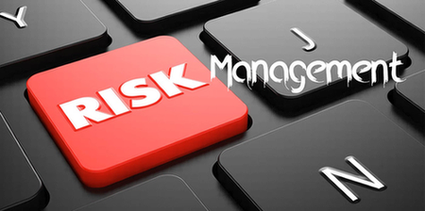Risk management is the art of using lessons from the past to mitigate misfortune and exploit future opportunities. In other words, the art of avoiding the stupid mistakes of yesterday while recognizing that nature can always create new ways for things to go wrong.
Content
1. What is risk management?
2. What are the objective of risk management?
3. What is the process of risk management?
4. Benefits of risk management?
1. What is risk management?
Risk management is the art of using lessons from the past to mitigate misfortune and exploit future opportunities.
We cannot lose sight of the most important aspect of risk management i.e. managing risk. That means making tactical and strategic decisions to control those risks that should be controlled and to exploit those opportunities that should be exploited.
Further, managing risk cannot be divorced from managing profits. Modern portfolio theory tells us that investment decisions are result of trading off return for risk, and managing risk is simply part of managing return and profits.
Moreover, managing risk must be a core competence for any financial firm. The ability to effectively manage risk is the single most important characteristic separating financial firms
that are successful and survive over the long run from firms that are not successful.
In brief, it is the process whereby organizations methodically address the risks attaching to their activities with the goal of achieving sustained benefit within each activity and across the portfolio of all activities.
2. What are the objective ?
some common risk management objectives chosen by companies to frame their risk management approach include the following:
- Develop a common understanding of risk across multiple functions and business units so as to manage risk cost-effectively on an enterprise wide basis.
- Achieve a better understanding of risk for competitive advantage.
- Build safegurds against earnings related surprise.
- Build and improve capabilities to respond effectively to low probability, critical, catastrophic risks.
- Achieve cost savings through better management of internal resources.
- Allocate capital more efficiently.
3. What is the process of risk management?
All risk management process follow the same basic steps, although sometimes different description may be used to describe these steps. Together these five risk management process steps combine to deliver a simple and effective risk management process.
Here are the following steps:
1. Identify the risk
Uncover, recognize and describe risks that might affect your project or its outcomes. There are number of techniques one can use to find business risks. During this step you can start to prepare your risk registrar.
Principals to identify risk is ”what can go wrong?”
2. Analyze the risk
Once risks are identified thereafter determine the likelihood and consequence of each risk. Develop an understanding of the nature of the risk and its potential to affect business goals and objectives This information is also mentioned in the risk register.
Principal to analyze the risk is ” How will it affect us?” (Consider the probability and impact to operations – is it high or low?).
3. Evaluate or rank the risk
Evaluate or rank the risk by determining the risk magnitude, which is the combination of likelihood consequence . Make decisions about whether the risk is acceptable or whether it is serious enough to warrant treatment. These risk rankings are also added to the Risk Register.
Principal to evaluate or rank the risk is “what should we do?” (to prevent loss from occurring or to recover if the loss does occur ).
4. Treat the risk
This is also referred to as risk response planning. During this step assess the highest ranked risks and set out a plan to treat or modify these risk levels. Minimize the probability of the negative risks to achieve acceptable risk levels. Minimize the probability of the negative risks as well as enhancing the opportunities by creating risk mitigation strategies, preventive plans and contingency plans.
Principal to treat the risk -If something does happen , how will you pay for it?
- Avoidance (Eliminate, withdraw from or not become involved )
- Reduction (Optimize – mitigate)
- Sharing ( transfer- outsource or insure)
- Retention (accept and budget)
5. Monitor and review the risk
Review the Risk Register and use it to monitor, track and update risks.
Principal of risk monitoring is how can we continuously look at foresight and hindsight.
4. Benefits of risk management?
This is one of the important pillars of Governance and arguably the only tool to deal with business uncertainty. It is as much about identifying opportunities as avoiding or mitigating losses.
Following are the benefits of risk management:
Saving valuable resources i.e. time ,income, assets, people and property can be saved if fewer claims occur
- Creating a safe and secure environment for staff, visitors, and customers.
- Reducing legal liability and increasing the stability of your operations.
- Protecting people and assets from harm.
- Protecting the environment.
- Reducing your threat of possible litigation .
- Defining your insecure needs to save on unnecessary premiums .



